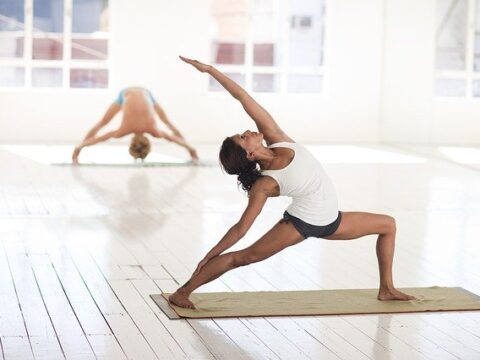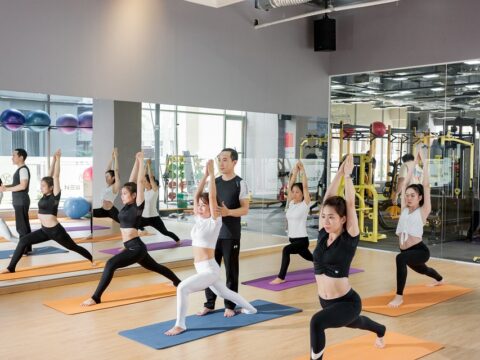Mudras can support health and wellness. The word “yoga” comes from the Sanskrit word “yuj,” meaning “to connect or unite.” The main goal of yoga is to tap into the power of prana, the vital life force that flows through all things.
Prana goes by other names too – Qi in China, Ki in Japan. In Christianity it’s called the Holy Spirit. By focusing our attention on prana and cultivating it, we can access this energy that brings harmony.
The word yoga refers to the union of one’s individual consciousness with universal consciousness. This practice is ancient, dating back way more than 5000 years.
Before the Gupta dynasty, Sanskrit didn’t even exist yet. It was later developed by brahminical society. While most Westerners think of yoga as physical poses and postures, those are just one part of the broader eight-limbed yoga practice.
Podcast
https://youtu.be/vvybe01FwbY
Yoga is also the name for a whole category of physical exercises. Important ancient yoga texts include the Bhagavad Gita, containing the teachings of Lord Krishna.
The Bhagavad Gita was recited on the battlefield of Kurukshetra over 3500 years ago, and remains a key yoga scripture. Sanskrit is an extraordinarily complex language with over 3000 rules of grammar and word structure.
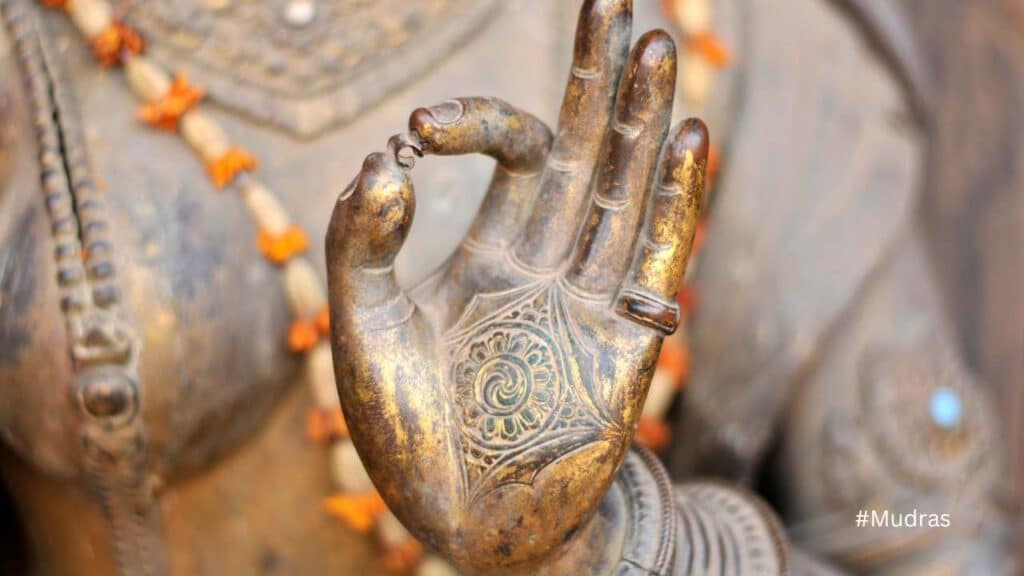
What mudras are and how they turn regular yogis into super yogis?
Mudras are hand gestures. They are visually pleasing. They create powerful sensations.
This article introduces yoga mudras. It covers their history. It explains how mudras intensify meditation. With my hands, I can change the world. I can make it kinder.
You may have seen statues of goddesses. Their hands form unique shapes. You may have seen photos of gurus. Their hands make interesting gestures. In yoga class, you may be told to connect thumb and index finger. You may notice yourself spontaneously making odd hand positions.
These are mudras – symbolic hand positions. Mudras channel energy flow in the body. They have been part of yogic and Buddhist traditions for centuries.
Today mudras are used in meditation, yoga and dance. They direct energy. They enhance concentration. They evoke symbolic meanings. Exploring mudras can be profound. It allows you to feel qi or prana flow in your hands.
What are the gestures that are often seen during yoga?
History And Science Of Mudras
Today’s popular yoga mudras come from Hindu and Buddhist traditions. Mudras can be used anytime. But they are most powerful for deepening practice and awakening divine energy when incorporated into meditation, yoga, or mindfulness.
Mudras, or hand gestures, reportedly balance the body’s elements. This brings a sense of well-being.
Each finger represents a different element. Performing mudras creates an energetic circuit. It connects and activates the desired elements.
According to yoga, Buddhism, and other respected teachings, all reality comprises five elements. These are earth, air, fire, water, and space or ether. The interplay of these elements drives all cosmic life and evolution.
This refers to the constant unfolding of the divine within us. It is mostly harmonious but can become imbalanced.
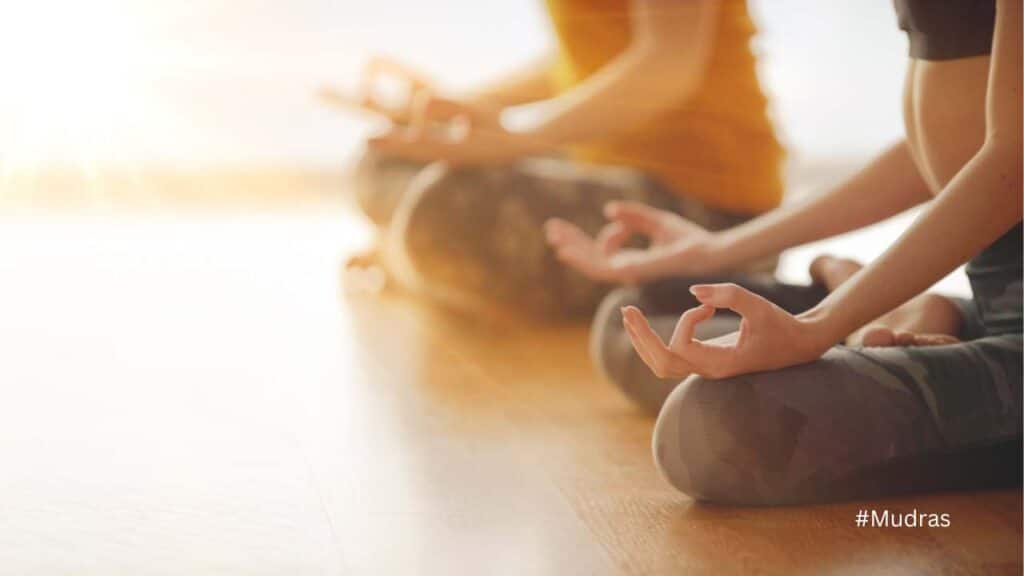
Balance Through Mudras
Mudras are valuable tools. They create internal energy resonance. They provide guidance in challenges. Ancient hand mudras remain relevant today.
Mudras are gestures. They help us focus thoughts, actions, energy positively. This improves meditation. It intensifies intention. It makes achieving goals easier.
Mudras are hand gestures. They help create change within. They connect us to something larger. Making mudras with our hands helps us connect. It helps us connect to something bigger than ourselves. It helps create change within ourselves.
Mudras may release stuck energy. Mudras can dissolve blockages. Mudras are hand gestures that help get our prana, our life force energy, flowing freely. Performing mudras may deepen our self-awareness and enhance our connection with others or the universe.
Regular practice of mudras can help clear areas of blocked energy and dissolve inner obstacles over time.
Each yoga mudra has a purpose. Each mudra has a result. This is from moving energy through the body specifically. Prana is intelligent energy. It flows where needed. We don’t have to worry. Mudras also use reflexology points.
Mudras And The Elements
Each finger links to an element. In the body and universe.
- The thumb is fire. Fire represents the breath’s warmth.
- The index finger is air. Joining thumb and index finger enhances breath flow.
- The middle finger represents ether/space. This mudra can increase spaciousness.
- The ring finger with thumb brings stability.
- The pinky is water. Joining it with the thumb may improve circulation.
Mudra Basic Training
Feeling anxious?
Placing your hands on your knees or thighs helps to keep you calm and feeling stable.
Sleepy or sluggish?
A palms up mudra might amplify your energy.
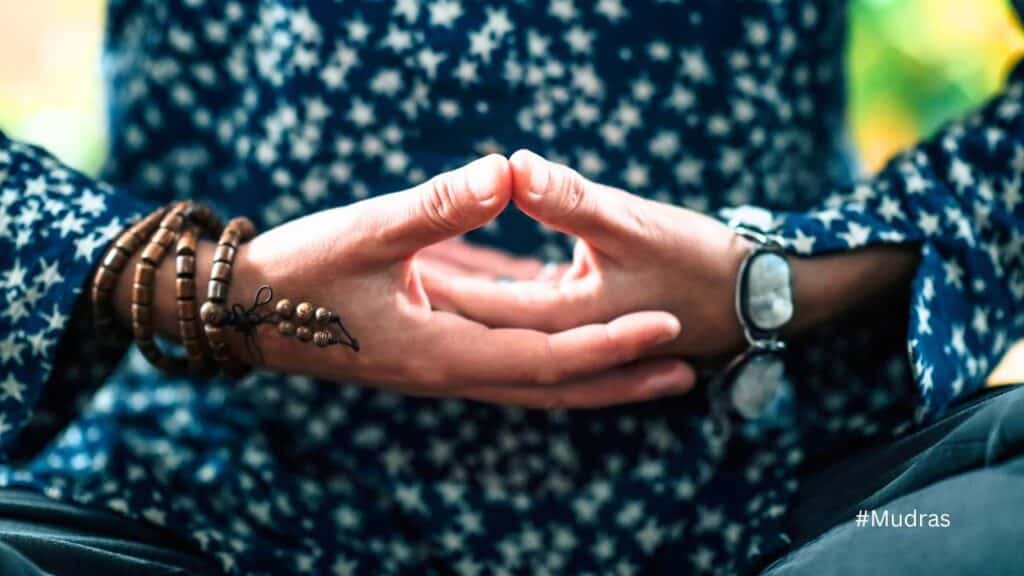
8 Magnificent Mudras To Begin Using Now
Power | Prana Mudra
Extend the forefinger and middle finger, and curl the ring finger and pinky in toward the palm. Cover their tips with the thumb.
The Prana Mudra is ancient and sacred in Hatha Yoga. It is the Mudra of the Soul. The Prana Mudra symbolizes universal life force. It is often used in meditation. In Hatha Yoga, it awakens chakras. It brings deep calm.
The Prana Mudra has been used in spiritual traditions since ancient times. It represents the soul. In Hinduism, it is known as Om Mani Padme Om. This means “Hail to the Jewel in the Lotus.”
Its name comes from Sanskrit words. “Prana” means life force or energy. “Mudra” means seal or embrace. Hatha Yoga developed in the 6th century CE. The Prana Mudra was introduced around 900 CE.
The first depiction of the Prana Mudra was in Tantra Chudamani. This book was written by Abhinavagupta.
To make this mudra, touch thumb, ring finger and pinky together. Keep index and middle fingers extended. Add it to your meditation.
Intellect | Buddhi Mudra
In the West, we often call this mudra “thumb in the nose.” However, in India it is known as “thumb in the mouth.”
The name for this mudra varies by region. Some call it “thumb in the nose.” Others say “thumb between the eyes.” The word “Buddhi” means intellect or wisdom. So the Buddhi Mudra aims to activate the intellect.
We use the thumb since it represents the head. Placing thumb in mouth directs focus inward. This stimulates clear thinking.
How to Practice Buddhi Mudra
Let’s try this mudra.
I begin with right hand. Thumb on nose. Index finger under thumb. Middle finger under index. Notice the space between middle and index fingers. This gap stimulates the intellect.
With practice, I feel a difference in my mind. If done correctly, the thumb-index space gets smaller. This shows increasing mental focus. But if done incorrectly, the space grows bigger. Meaning distraction and wandering mind.
Keep practicing Buddhi Mudra consciously. Observe the effects on your clarity and concentration. This hand position channels energy to activate the intellect within.
Mind | Gyan Mudra
Gyan Mudra, also called Yoga Mudra, is a symbolic hand gesture used in yoga. Its meaning is to focus the mind on a point ahead.
It represents humility and concentration. This mudra is often used in meditation. A common version is Om Namah Shivaya, the pranayama or breathwork mudra.
Yogis believe concentration and pranayama can lead to knowledge and self-realization. There are several variations of Gyan Mudra, but all involve the hand in a triangle shape.
This represents the triangle, a symbol of Shiva, or the pyramid, symbol of Brahma. Bringing hands into this shape connects meditators to these divine energies.
Another version joins the thumb and index finger. These are the fingers closest to the heart. They represent the divine feminine and masculine.
The left thumb is the sun, right is the moon, day and night. Their union symbolizes harmonizing masculine and feminine energies.
To practice Gyan Mudra: Sit tall with hands on knees, palms up. Touch tip of index finger to thumb, keeping other fingers straight.
Focus eyes softly ahead. Breathe slowly and deeply. Notice the effects on your mind. The triangle of thumb and index finger brings focus, calm and connection.

Digestion | Apana Mudra
It’s called Apana Mudra because it relates to Apana, one of the three pranas. The others are Vyana and Samana – the body’s vital life energies.
Apana connects to the air element, Prana Vayu. So Apana Mudra works with this air energy. To do Apana Mudra, sit with crossed legs. Place palms down on knees, facing up.
Relax your eyes and focus on the thumbs pointing up and touching. Now put index fingers on the insides of each thumb. Move them together in circles clockwise. Don’t move other fingers.
When done, return hands to original position. Place right palm over left. Repeat process with the other hand. Then relax into a meditative state.
Concentrate on your breathing. As you exhale, feel your mind expand outward like the wind. When inhaling, draw energy from the universe into your being. Become one with all around you.
Practice Apana Mudra to harmonize the vital air element within. Its circular motion creates smooth energy flow.
Sun | Surya Mudra
The Surya Mudra is a Sanskrit symbol. It is used in meditation and yoga. It symbolizes the sun and its life-giving power.
This mudra has four main symbolic points. The first point is the “O” hand gesture. It represents the Earth, the source of everything.
The second point is two hands facing up. They represent the sun. The third point is the snake head. It represents the human body. The fourth point is the open mouth. It symbolizes infinite solar energy and the energy of the universe.
The Surya Mudra is an important yoga symbol used during meditation. Connecting to the four elements, it links us to the sun’s vital power that sustains all life.
To practice Surya Mudra, sit tall with spine erect. Bring your hands together in front of the chest in “O” shape. Face open palms up towards the sky. Breathe slowly and feel the sun’s warmth energizing your body and spirit.
Meditation | Dhyana Mudra
Looking to boost your energy levels? Or maybe you just want a good workout. Well, there’s a simple way to do both – the Dhyana mudra.
This yoga pose has been used for ages to bring balance back to people’s lives.
Now, thinking about some weird yoga thing may seem odd when you just want to get in shape. But hear me out. This pose can increase your energy, improve focus, strengthen immunity, and even tackle mental health issues.
It’s easy. You simply press your fingers together and hold them to your chest. Then breathe deeply through your nose and slowly exhale out your mouth. This straightforward yoga move is great for beginners. And it delivers on all those benefits I just listed.
So if you want more energy or to try something new to stay fit, give it a go. And no need to stop at just one exercise. There are plenty of other ways to break a sweat too. The point is – this simple mudra can provide the boost you need, along with a good workout.
Life Energy | Aswini Mudra
The Aswini mudra is ancient and powerful. Regular practice brings harmony. It improves life, relationships, work, finances. This mudra is rare. Do it daily for happiness and health.
The Aswini has many names. It’s the yoga of the mind, of peace and of letting go. Yogis practice it for concentration. They’ve done this ritual for thousands of years. This mudra is often the last one taught.
The Aswini has two parts. There is the mudra itself. There are also asanas. These postures go with it. For the mudra, the left hand touches the forehead. The right hand touches the chest. Hands sit beside the navel.
Hold the pose for 30 seconds. When done right, you’ll feel relaxed. Your body gets light. There is bliss.
Lungs | Bronchial Mudra
The Bronchial Mudra is an ancient Indian meditation pose. It has calmed minds for thousands of years. It reduces stress and anxiety well.
The mudra is named after the bronchi. These are the lung airways. This pose focuses your mind. It clears negative thoughts. Sit on the floor comfortably. Keep your legs straight. Bend your knees.
First, breathe in deep. Hold for three counts. Now exhale slowly. You feel relaxed. Bring attention to your lower abdomen. Feel breath moving here. Focus on the bottom ribs to top pelvis area. Next, focus on the sternum area. Feel breath moving here too.
Your mind is now calmed. Meditate this way for a few minutes.



